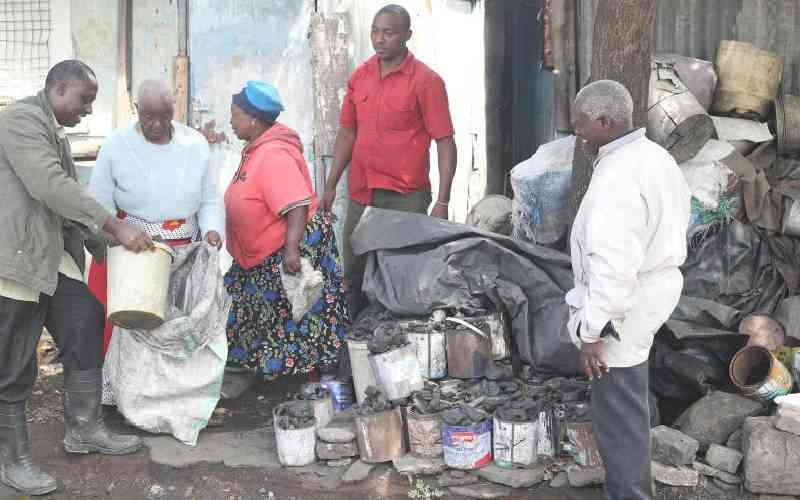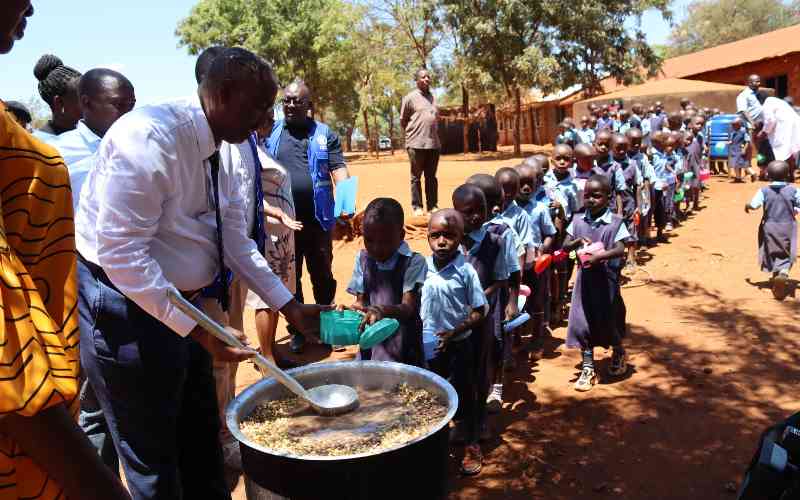Albert Wambura was among people who depended on charcoal for their livelihood and to meet this need, he would cut down trees to burn charcoal for his own personal consumption and to sell.
“We made money from charcoal production because this area has little rainfall which does not favour good farming activities,” he says.
However, Wambura — who comes from Mbeere North Sub-County in Embu County — had no idea cutting down trees for charcoal production was destroying the environment. For a long time cutting down of trees for charcoal, fuel and timber led to loss of forest cover which further degraded the land.
This situation is however, changing following launch of a programme that is helping restore environment conservation in the area.
The project head, Leonard Odini, says they embarked on sensitising locals on modern technology that produced charcoal efficiently.
“For a long time, locals in Mbeere have been cutting down trees and producing charcoal using traditional earth kilns that were not efficient and took six to seven days to complete the production process,” he says noting the quality of charcoal was also very poor.
Courtesy of the mainstreaming sustainable land management project hundreds of locals now say they have been trained on modern and efficient way of charcoal production. Many admit that before the intervention, they had no idea there exists rules of charcoal production.
“I was producing charcoal to make money and provide for my family. I had no idea there are laws or efficient ways of doing it since no one had ever given us such information,” says Joseph Kinyua.
He says they would go deep into the forest looking for big tree trunks to burn for charcoal while taking branches and twigs for firewood.
Odini says the community members produced charcoal individually, used traditional earth kilns, indiscriminately harvested big trunks and used a lot of leaves and branches, grass and soil to cover the mould.
“They now appreciate introduction of modern kilns because they can use small and thin branches, including those that are pruned from trees rather than cutting the whole tree. They also work faster, say in two days with minimal labour,” he said.
The project also introduced energy saving cooking devices in their homes which greatly reduced emission of carbon dioxide.
One of the beneficiaries of these energy saving jiko is Josephine Makena who says, unlike before, she no longer struggles looking for a lot of firewood.
“I can tell you these jikos are very good and efficient. Nowadays, I only use two pieces of firewood for cooking,” she says.
 The Standard Group Plc is a
multi-media organization with investments in media platforms spanning newspaper
print operations, television, radio broadcasting, digital and online services. The
Standard Group is recognized as a leading multi-media house in Kenya with a key
influence in matters of national and international interest.
The Standard Group Plc is a
multi-media organization with investments in media platforms spanning newspaper
print operations, television, radio broadcasting, digital and online services. The
Standard Group is recognized as a leading multi-media house in Kenya with a key
influence in matters of national and international interest.
 The Standard Group Plc is a
multi-media organization with investments in media platforms spanning newspaper
print operations, television, radio broadcasting, digital and online services. The
Standard Group is recognized as a leading multi-media house in Kenya with a key
influence in matters of national and international interest.
The Standard Group Plc is a
multi-media organization with investments in media platforms spanning newspaper
print operations, television, radio broadcasting, digital and online services. The
Standard Group is recognized as a leading multi-media house in Kenya with a key
influence in matters of national and international interest.










